April 4, 2023
We rubbed our hands for warmth and shivered a bit as we stood on the high cliff ledge with R, our guide, and about eight other hikers. The sky was deep azure, no clouds. It was morning so the wind was high and it was only about 35 degrees. We were about pick our way along the canyon path that descends 900 feet down to the floor of the Canyon de Chelly, from the Navajo “Tseyi” (“tse”meaning rock and “yi” meaning inside of/within) in the heart the Navajo Nation, the land of the Dine’. Because it is both a sacred place and land where Navajo still live and farm, hiking is only permitted with a guide.
R, who was Navajo, asked us to assemble in a circle. He spoke quietly with an economy of words. “Please share what you are called, where you are from, how you identify, and why you are here. We will start in the East.”
He pointed at the woman across from me. There was an awkward pause. She shared her name, that she was from Wisconsin that she identified as a she/her and that she was excited to learn more about the southwest and Indian culture - that it was her first time in this area.
Each person followed with their introduction: the woman’s husband from Wisconsin, a couple from Quebec, a young couple from Binghamton, NY moving west to Colorado, and an older woman from Colorado.
We all followed a similar pattern; name, place we were from, our preferred pronoun and a little bit about why we came today. Learning more about the history and the people, seeing archeological sites, and discovering more of southwest were common answers.
When it was my turn, I shared the same basic information and my pronoun — though this felt strange. When R initially presented the question, “How do you identify,” my first reaction was to say “artist” and “writer.” But as others shared their preferred pronouns, I felt somehow that my pronoun was the “correct” information to give. So I resisted sharing my initial thoughts about identifying myself. However, I stayed true about the next question. I shared that I was here to find peace and connect with this place in my own way. It wasn’t about history or archeology so much as about it was enjoying the hike, about being present.
When we were finished, R spoke. First in his native language. Then in English.
“I am called R, of the Salt River Tribe. I am Navajo. I find it interesting to ask the question about how people identify themselves. Today, people used pronouns. Sometimes it is places, or professions, or beliefs, or as members of a family or group.”
R continued.
“I identify as a five fingered spiritual being. I followed my path. I have been a ranger and guide here in the Canyon for 15 years. This is our ancestral home and is still our home today.”
“I asked you to answer these questions as way of announcing yourself. Then, when you enter our home you are known—you are not a stranger. I asked you why you came here so that the canyon, this special place, hears your intentions and can help you fulfill them.”
“We can now enter the canyon as neighbors to each other, to our ancestors who hear us and to the people who live here.”
When we reached the valley floor, I paused, reached down and touched the ground, touching the warm red sand, and and looked up at the walls of the canyon standing sentry. I spoke to them again.
“I am an artist, I am a writer.”
Postscript: Three dogs followed us down, then back up the Canyon. R said they loved to join these treks to welcome and protect human friends. This one was my fast friend and companion. R told us this was the very first trek of the year. Snow was still on the path on our descent. Our trek took place on April 1, the 92nd anniversary of the founding of the Canyon de Chelly National Monument.

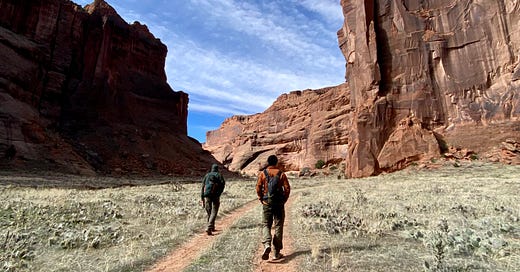


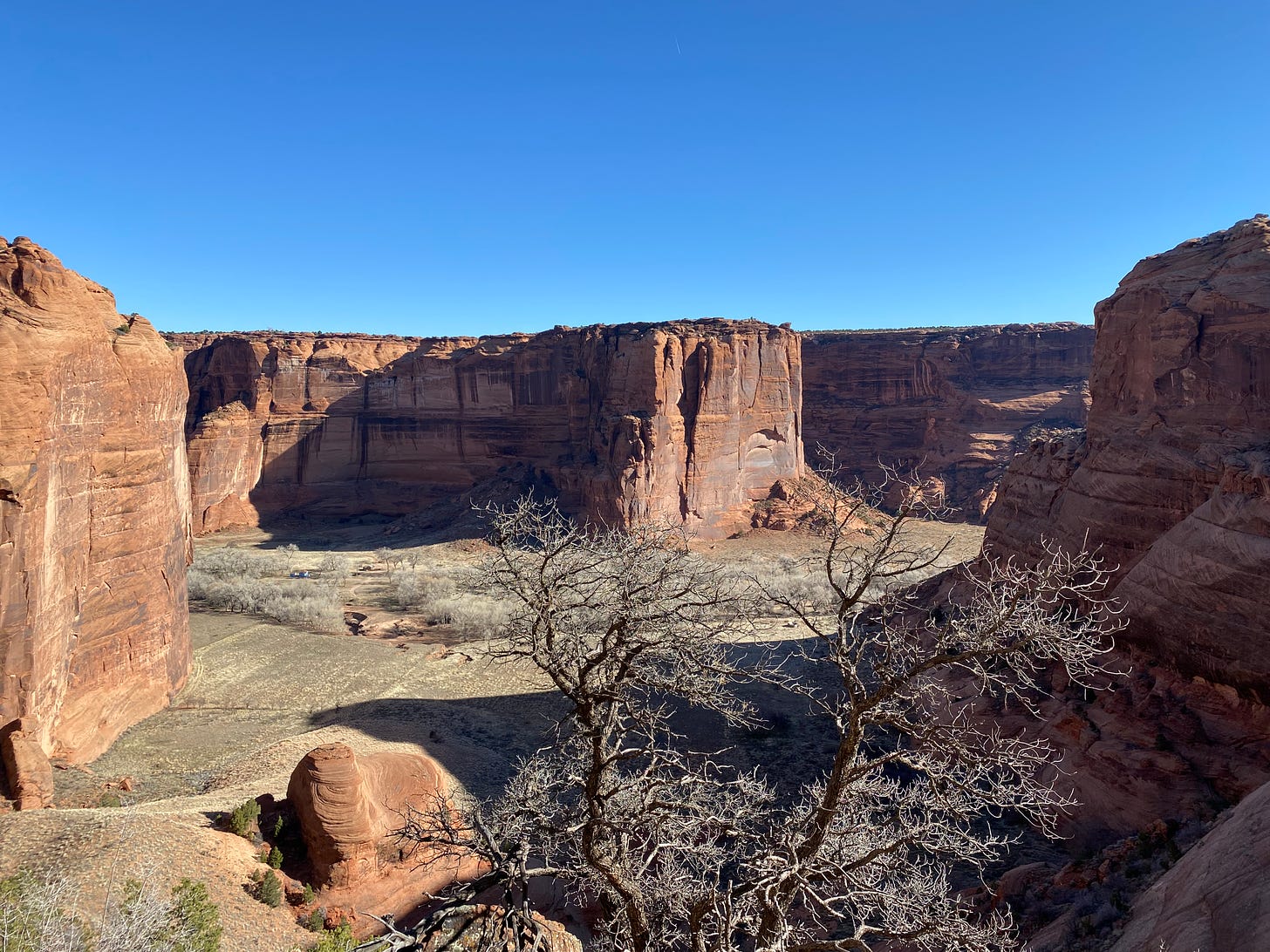
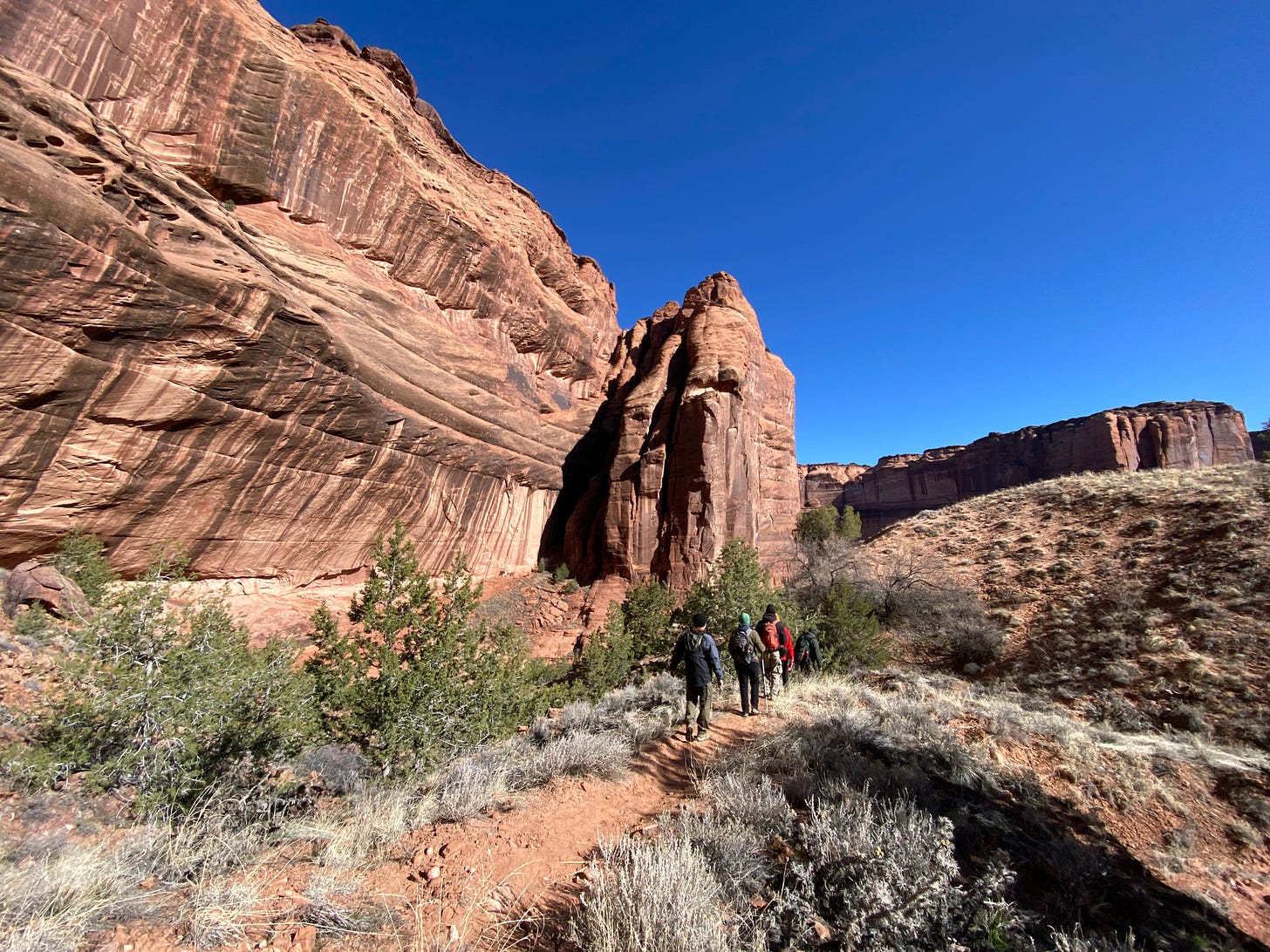
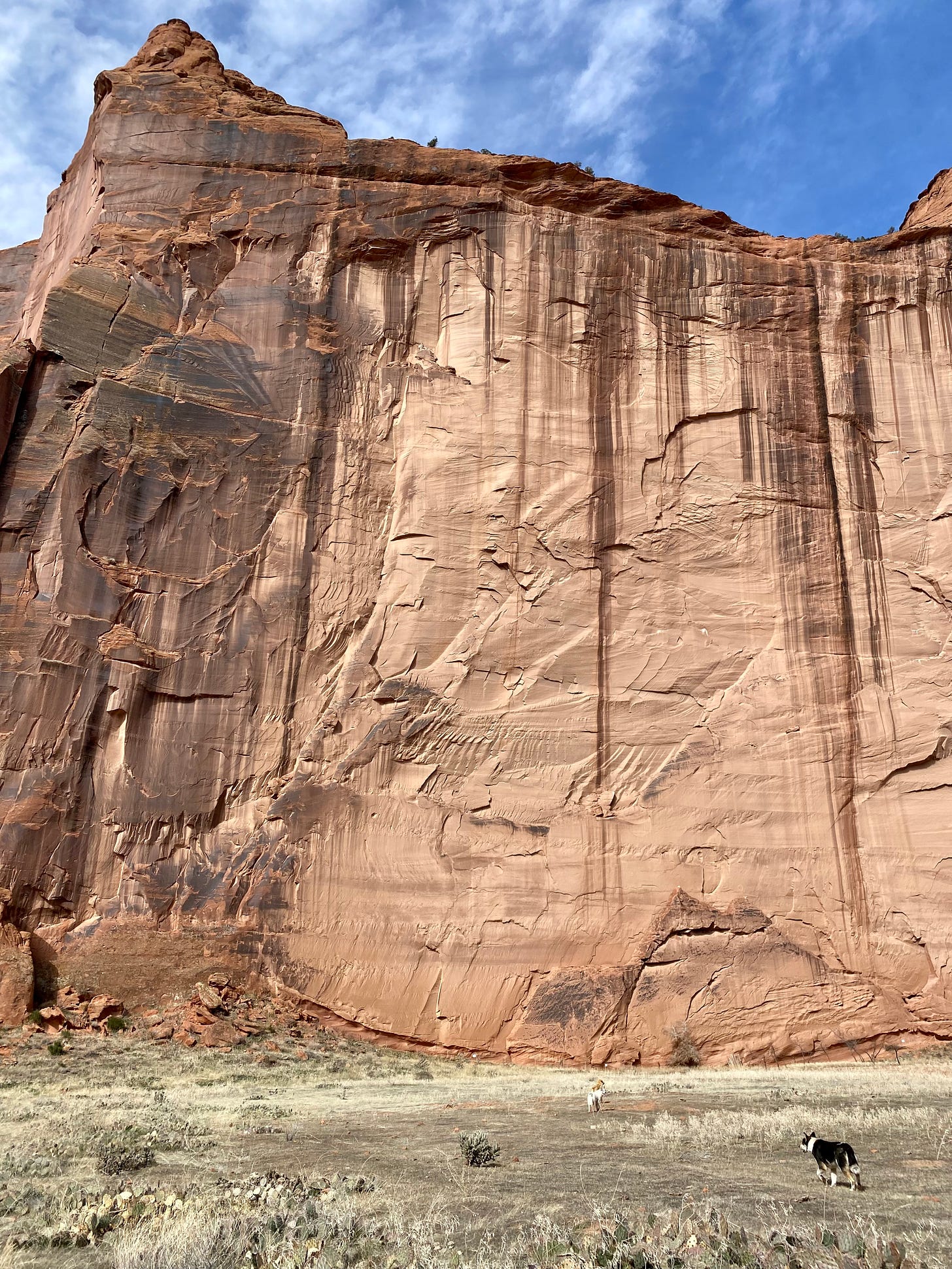

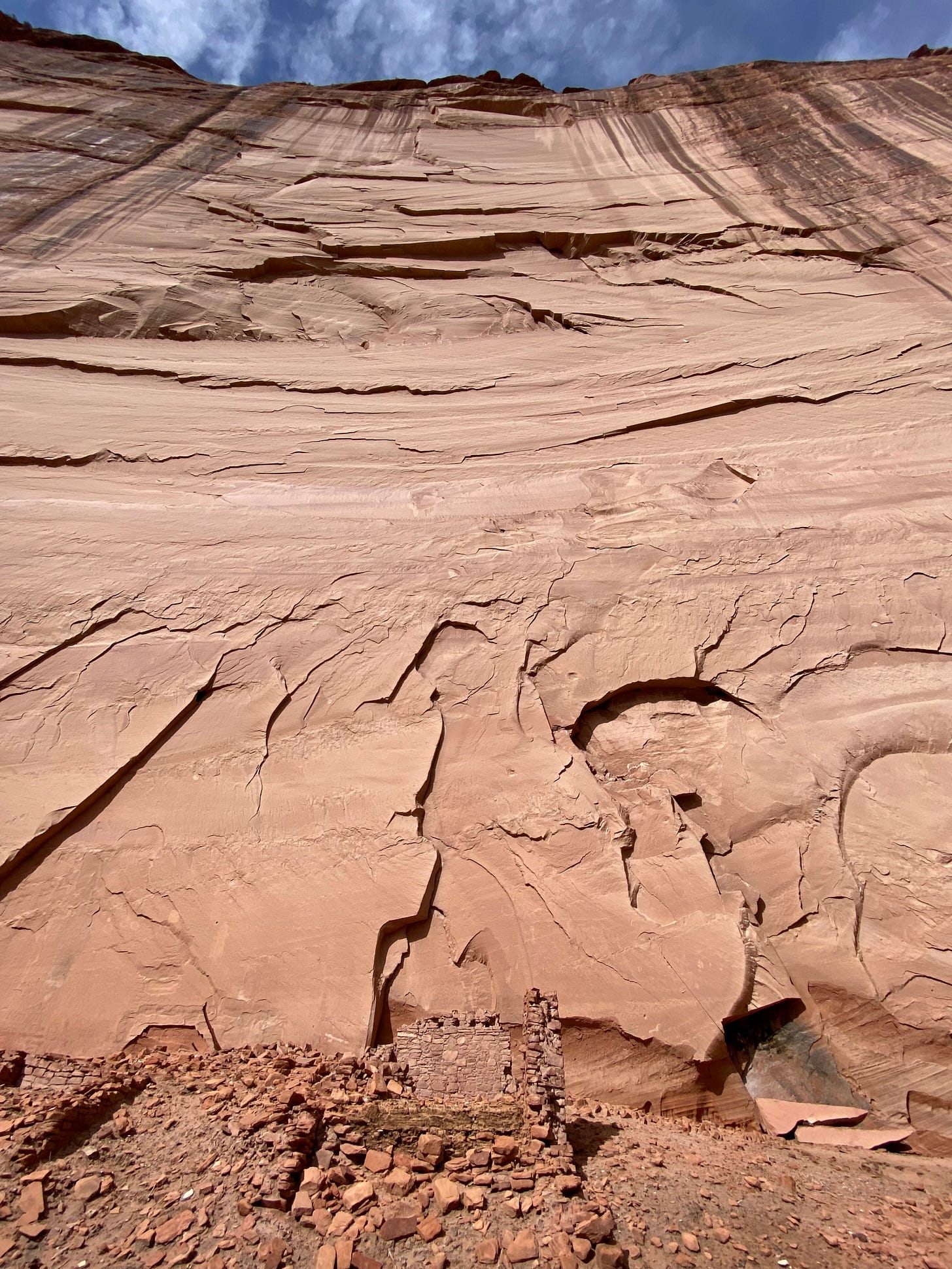
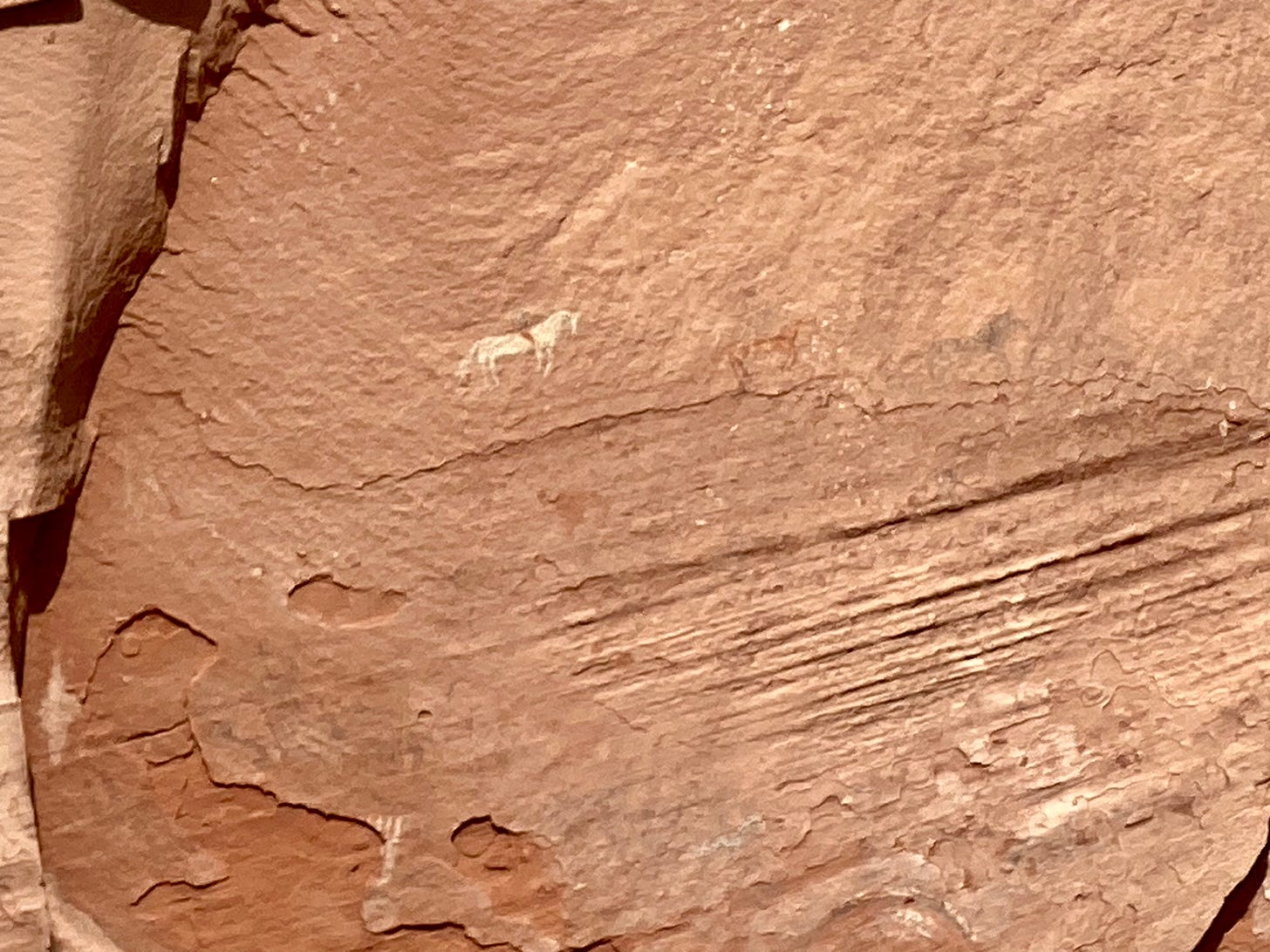
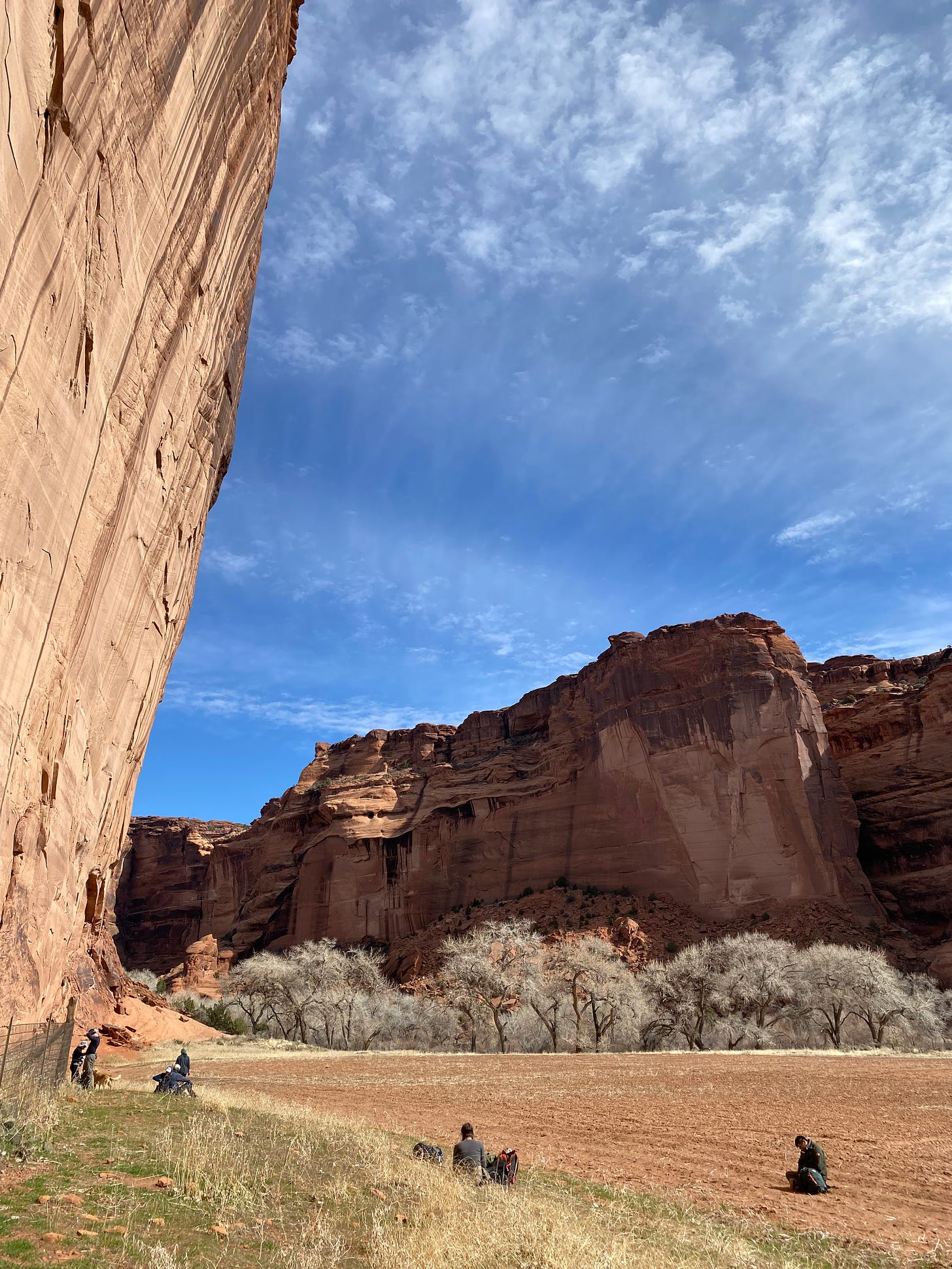
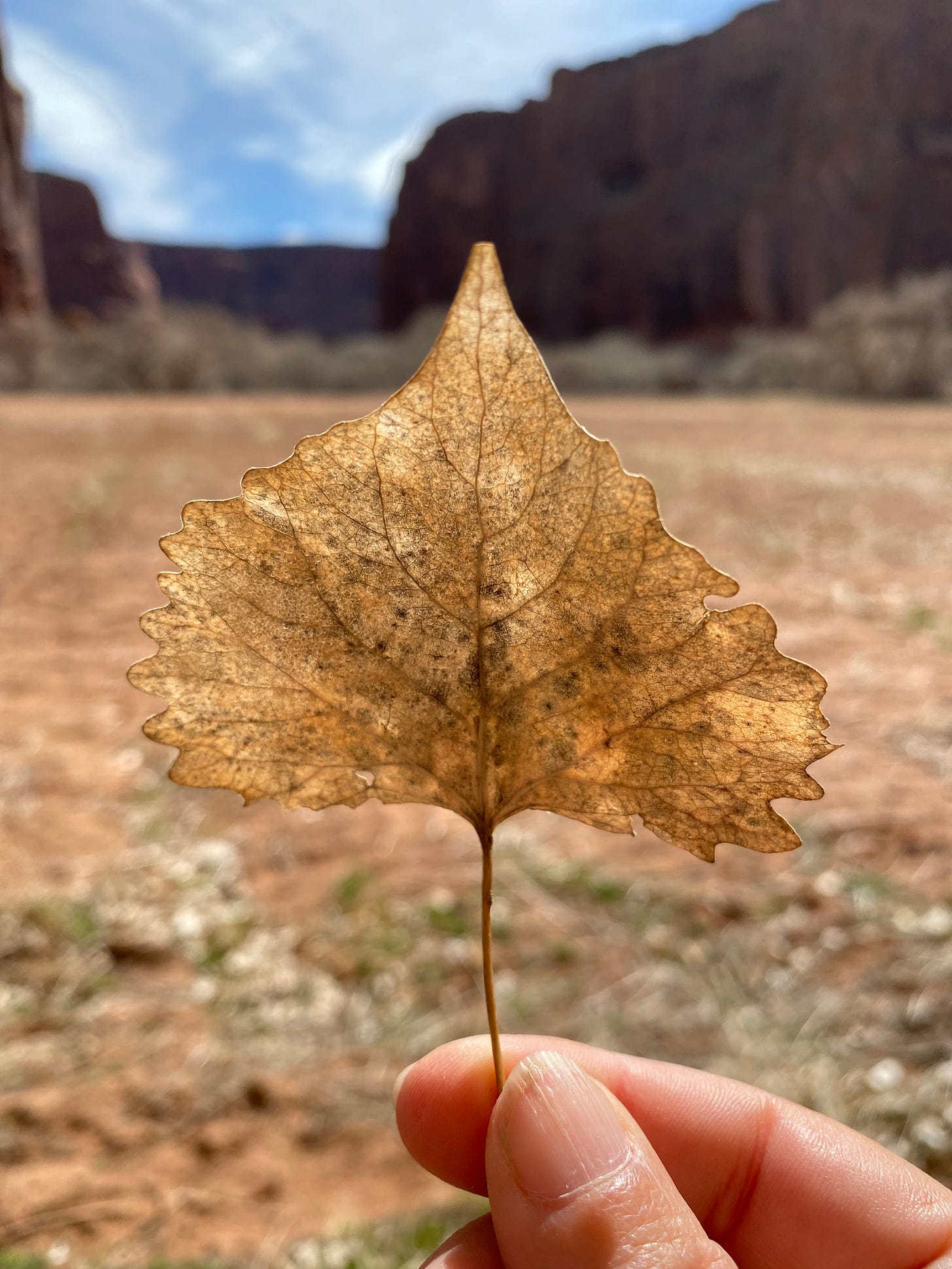
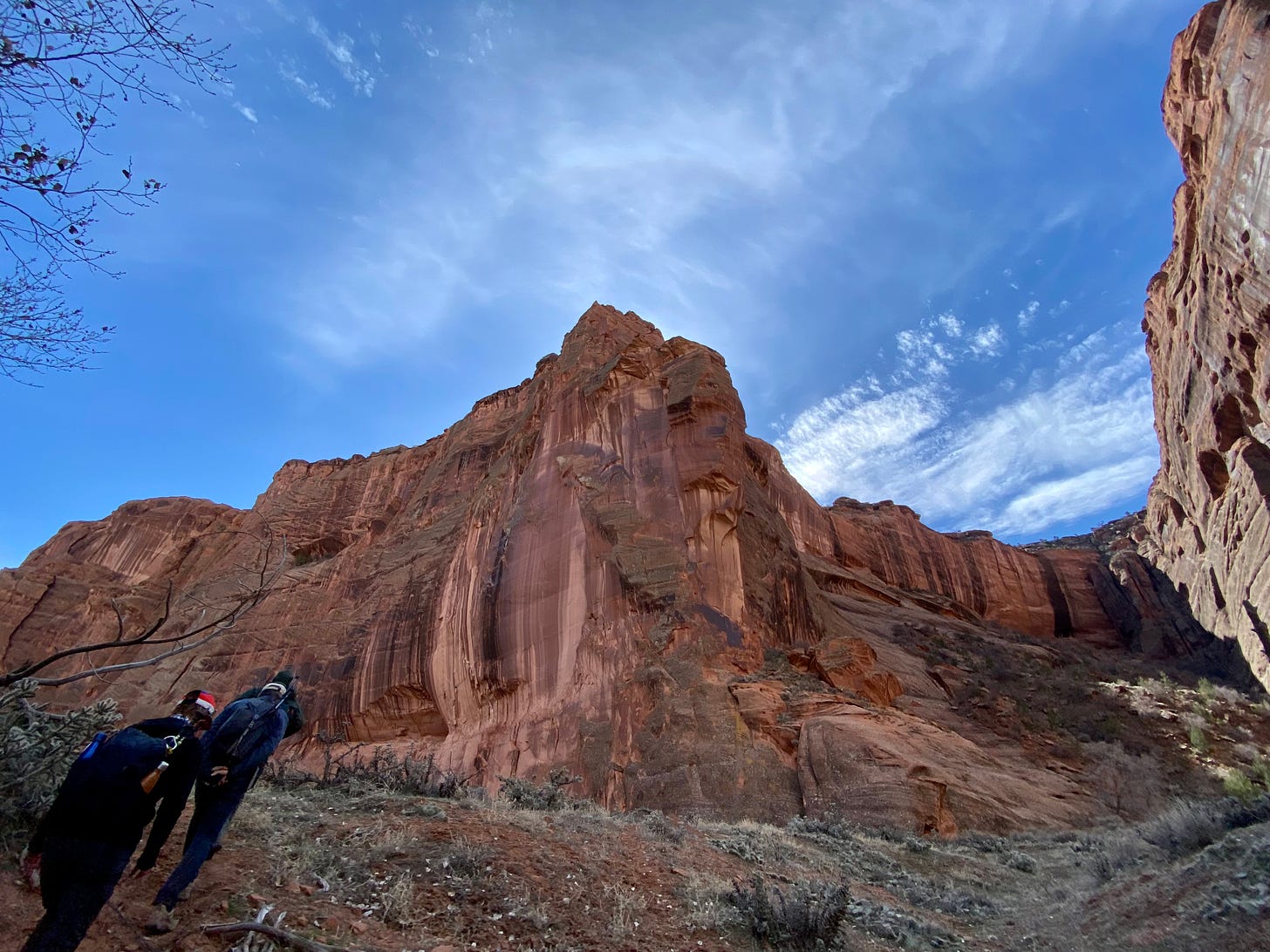
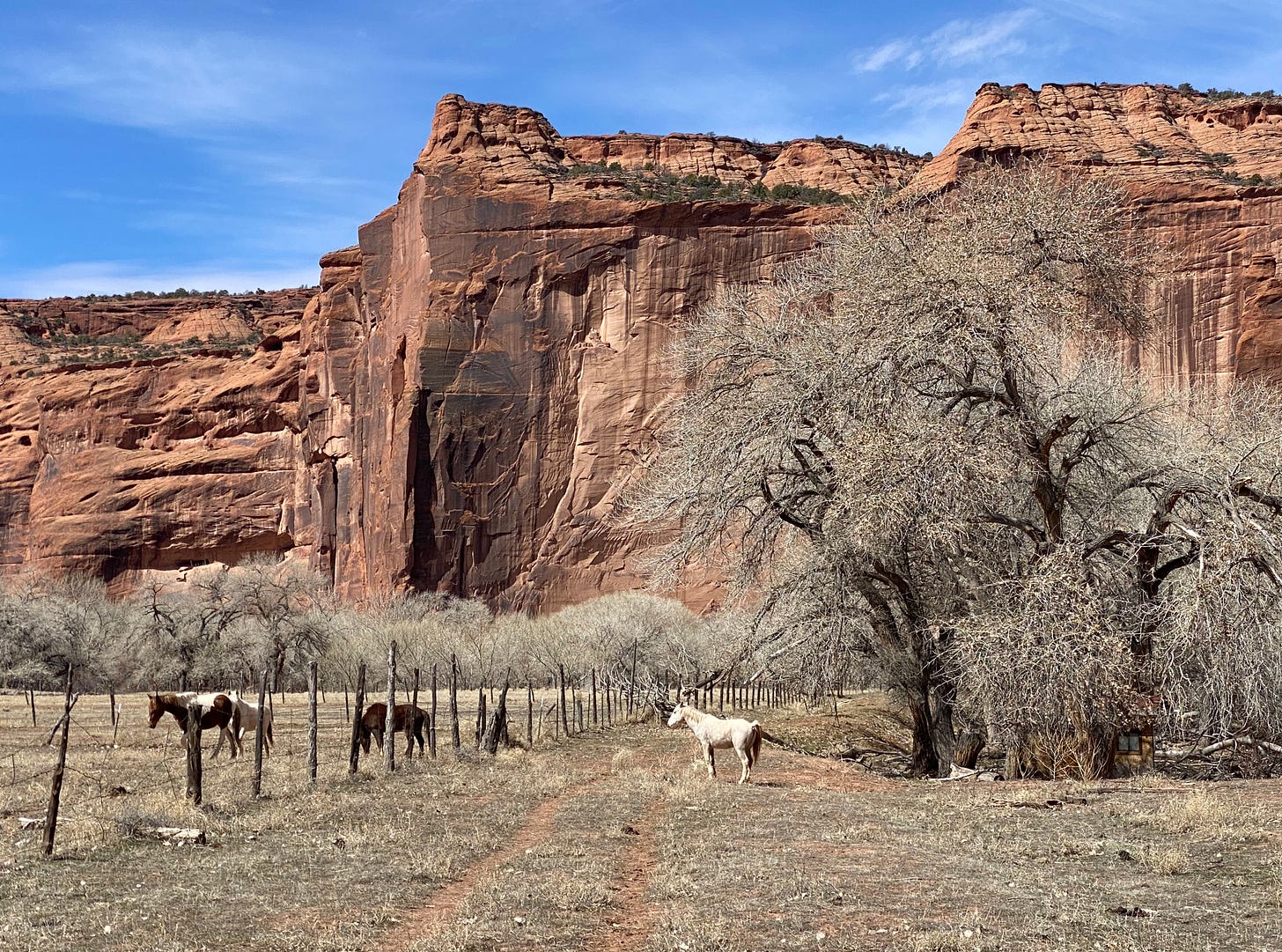
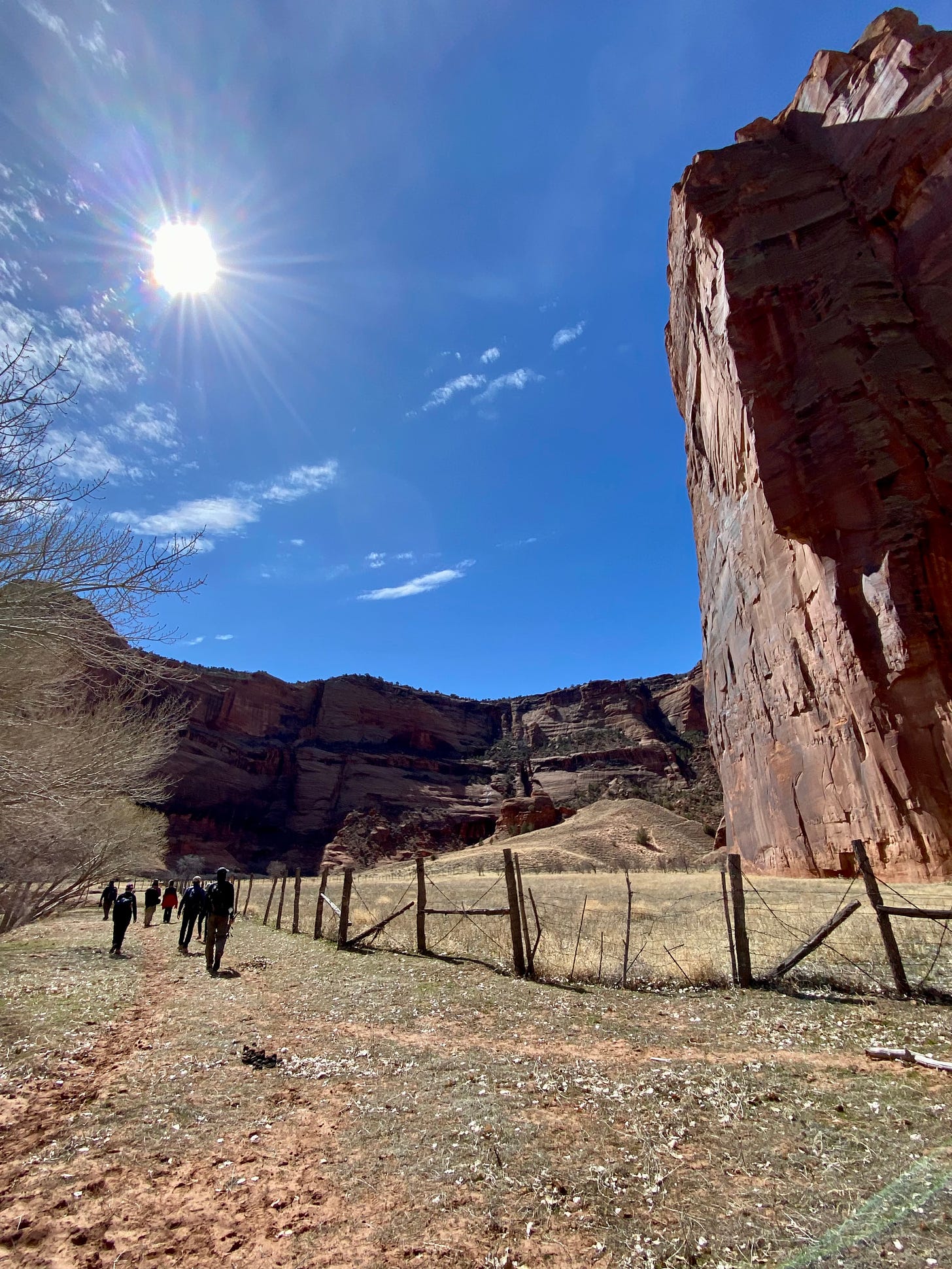
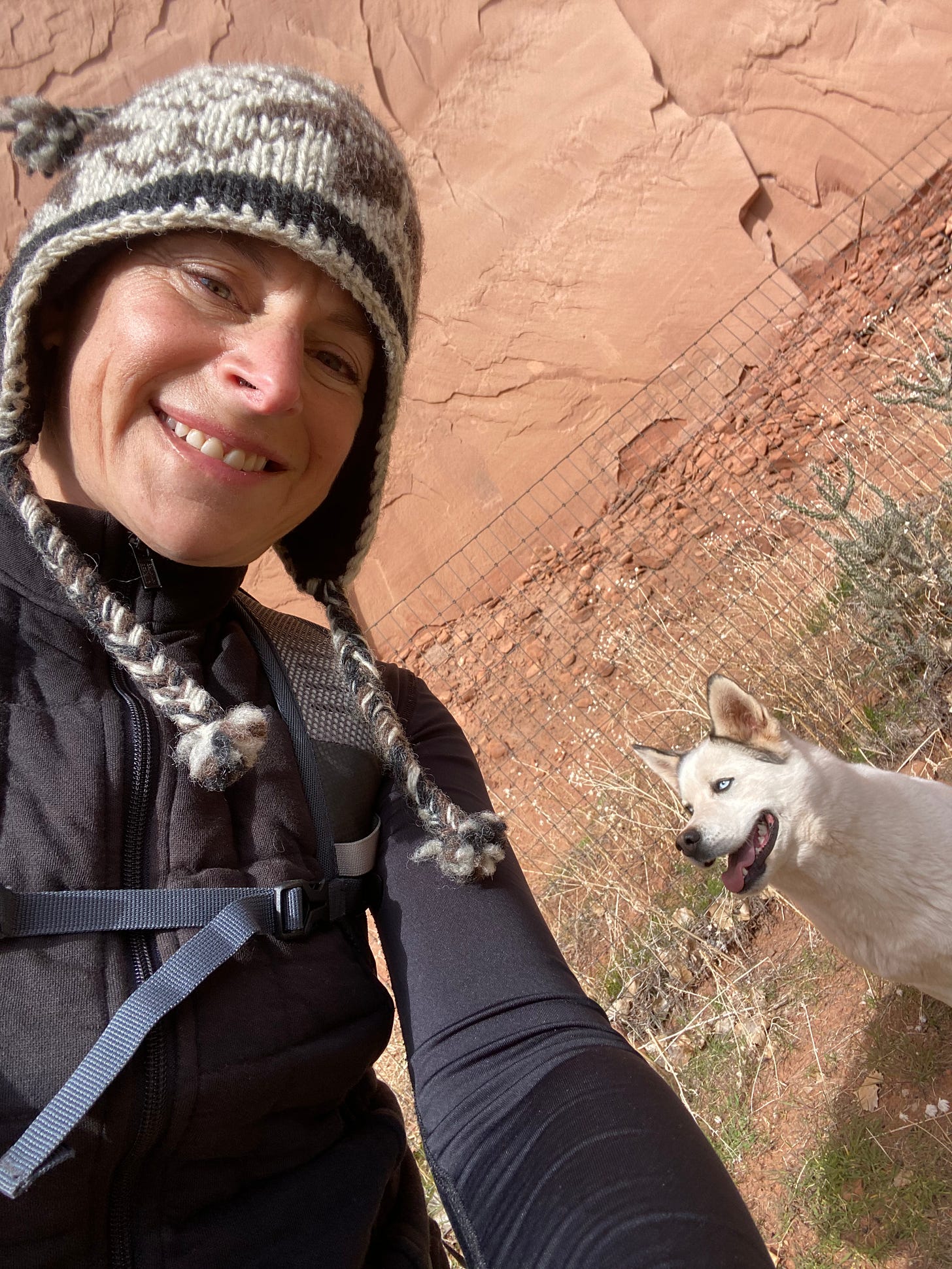
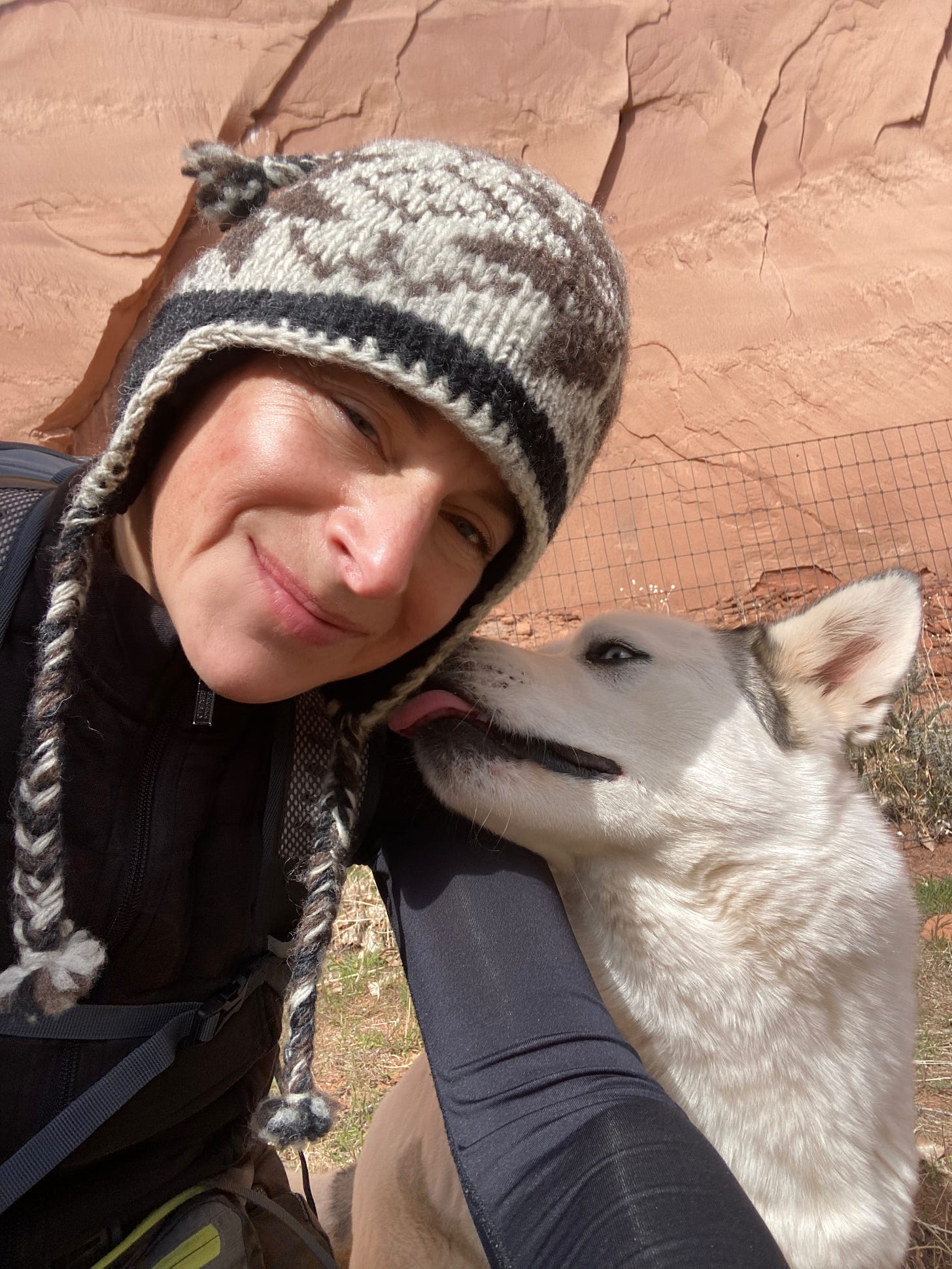
What an amazing experience.
I want the dog